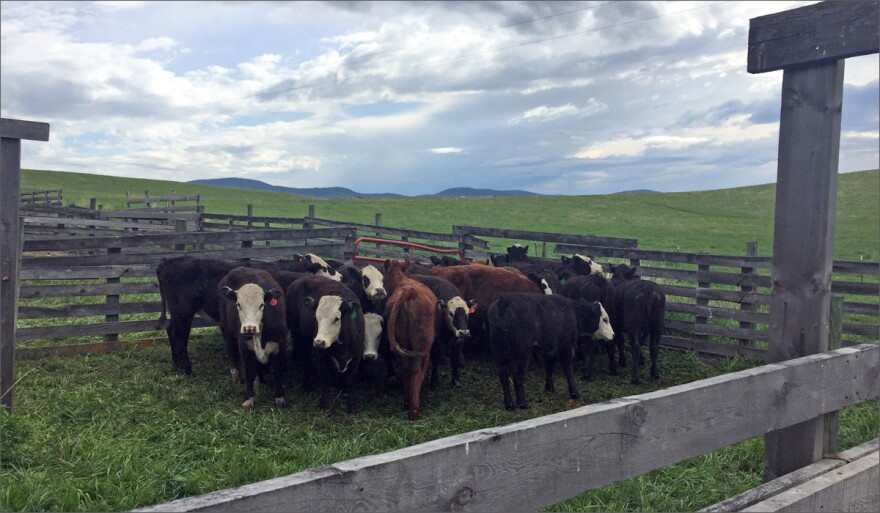Farmers in north central and northeast Washington are waiting for the waters to recede from their fields so they can repair the damage from recent flooding.
In May, rapidly melting snow from Canada came rushing down river valleys in Okanogan and Ferry counties, flooding hay fields, damaging or destroying irrigation equipment and causing hundreds of thousands of dollars’ worth of damage.
Phil Dart is a fifth-generation rancher in the Okanogan Valley. His hay field now look like a lake.
“We have 120 acres of irrigated alfalfa in here,” he said. Now, the field is covered by up to 10 feet of water in some places.
Dart’s ranch is in the hills above Oroville near the Canadian border, but his hay field is right down along the Okanogan River floodplain. This is where he grows food to feed his cows through the winter.
“It was inevitable,” Dart said of the flooding. “It was going to happen some year. I was just wishing it wouldn’t be the year we just spent $30,000 replanting the fields.”

All around this county, lots of hay fields just like this one are underwater. Some ranchers own and maintain hay fields above the floodplain, but the flooding has damaged low-lying irrigation equipment, causing their hay to dry out.
The Washington Wheat Growers Association estimates 1,500 acres of hay were impacted by flooding.
Since the flooding was not severe enough to result in a disaster declaration, farmers are not expecting much assistance from the state or federal governments.
“There might be some help for restoration of the dikes,” Dart said. “There might be some help for some of the damage that was done to the irrigation infrastructure. But at this time, we have no idea. We’re on our own 100 percent right now.”
As Dart spoke, a carp swam by. Dart said the fish are starting to spawn in his field.

“Well, they make good fertilizer,” Dart joked. But they cause problems too.
“The floodwater is always high in nitrogen,” he said. “If we have too high of nitrates, we won’t be able to feed it to the cows.”
Not only is Dart’s initial investment in planting this hay field gone, he now has to pay to clean it up and restore it. His irrigation equipment has also been destroyed. This fall, he’ll have to buy hay to feed his cows.
By Dart’s estimation, it could cost him between $100,000 and $200,000 when it’s all said and done.
“There’s an old saying, in order to make a small fortune you have to start with a big one,” Dart said.
And he is not the only farmer in this position right now. Right next door to Dart’s field is another owned by Cody Ames.
“The flood has seriously complicated things,” Ames said.

Ames is a rancher who works by day as a veterinarian. He has a couple hundred acres of alfalfa underwater. After a full day at his clinic in Tonasket and a trip to Phil Dart’s ranch to vaccinate heifers, he’ll head down to his own inundated hay field to repair a dike. He says a gross estimate of his cash losses could come close to half a million dollars.
“You have all your profits for a long time wiped out,” he said. “And you have to divert other income to essentially mitigating your losses.”
One way to make up for those losses, Dart said, is to sell more cattle.
“You gotta be flexible,” he said. “You can’t get married to a certain number of cows. It’s whatever you need to do to get through.”


